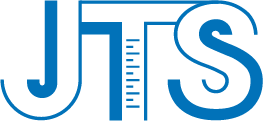Toy stationery testingProduct
Your Location:Home > Toy stationery testing| No. | Standard Name | Remarks |
| 1 | EN 71-1:2014+A1:2018 Safety of toys - Part 1: Mechanical and physical properties | |
| 2 | N 71-2:2020 Safety of toys - Part 2: Flammability | |
| 3 | EN 71-3:2019+A2:2024 Safety of toys - Part 3: Migration of certain elements | |
| 4 | EN 71-4:2020 Safety of toys - Part 4: Experimental sets for chemistry and related activities | |
| 5 | EN 71-5:2015 Safety of toys - Part 5: Chemical toys (sets) other than experimental sets | |
| 6 | EN 71-6:2019 Safety of toys - Part 6: Graphical symbols for age warning labelling | Withdrawn and incorporated into EN 71-1 |
| 7 | EN 71-7:2022 Safety of toys - Part 7: Finger paints | |
| 8 | EN 71-8:2018 Safety of toys - Part 8: Activity toys for domestic use | |
| 9 | EN 71-9:2021 Safety of toys - Part 9: Organic chemical compounds - Requirements | Withdrawn; some requirements have been integrated into Appendix C of Annex II to the EU Toy Safety Directive 2009/48/EC |
| 10 | EN 71-10:2021 Safety of toys - Part 10: Organic chemical compounds - Sample preparation and extraction | Not harmonized |
| 11 | EN 71-11:2021 Safety of toys - Part 11: Organic chemical compounds - Methods of analysis | Not harmonized |
| 12 | EN 71-12:2023 Safety of toys - Part 12: N-Nitrosamines and N-nitrosatable substances | |
| 13 | EN 71-13:2021+A2:2024 Safety of toys - Part 13: Olfactory board games, cosmetic kits and gustative games | |
| 14 | EN 71-14:2020 Safety of toys - Part 14: Trampolines for domestic use |
In practical applications, EN 71-1, EN 71-2, and EN 71-3 constitute the most fundamental testing requirements.
EN 71-1 is the part of the EN 71 standard concerning the safety of toys in relation to their physical and mechanical properties. Its full title is "Safety of toys - Part 1: Mechanical and physical properties." This section specifies the safety technical requirements for the mechanical and physical properties of toys intended for use by children of different age groups, from newborns up to 14 years of age. It also includes requirements for packaging, marking, and instructions for use. Its core objective is to ensure that toys, under normal use and foreseeable reasonable abuse, do not cause physical harm to children due to design or manufacturing defects.
EN 71-2 is the part of the EN 71 standard specifically addressing the flammability of toys. Its full title is "Safety of toys - Part 2: Flammability." This section specifies the flammability requirements for materials used in toys, aiming to reduce the risk of fire originating from toys and the associated burn hazards to children. EN 71-2 clearly defines the categories of highly flammable materials that are prohibited in all toys and establishes corresponding limits for the speed of flame spread or burning time for different types of toys.
EN 71-3 is the part of the EN 71 standard that sets limits for the migration of certain elements from toy materials. Its full title is "Safety of toys - Part 3: Migration of certain elements." This section specifies the maximum allowable migration limits for certain elements (primarily 19 migratable heavy metal elements) from accessible parts of toys or materials. Its aim is to reduce the risk of children's exposure to these harmful substances through mouthing contact, skin contact, or inhalation.
EN 71-3 - Scope of Testing:
•All accessible materials on a single toy must be tested.
•Packaging materials that form part of the toy or are intended to be kept for play are subject to testing.
•Materials that are not small parts and are made of metal, glass, or ceramics are exempt from testing.
•Toy materials weighing less than 10 mg are exempt from testing.
J-Testing is a CNAS, CMA, and CPSIA accredited laboratory, committed to providing global clients with professional third-party testing, consulting services, and cross-border certification assistance.






 Our Service
Our Service
